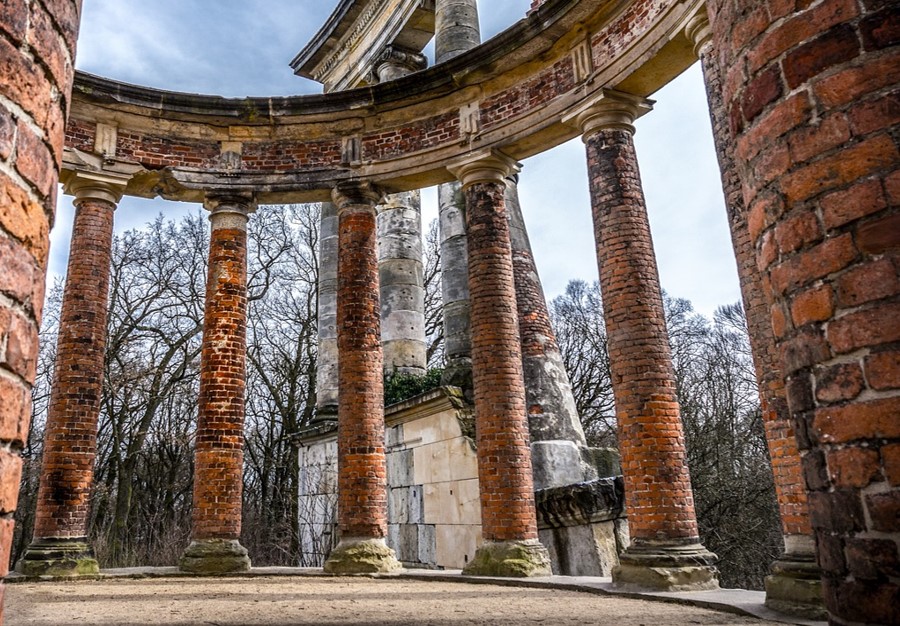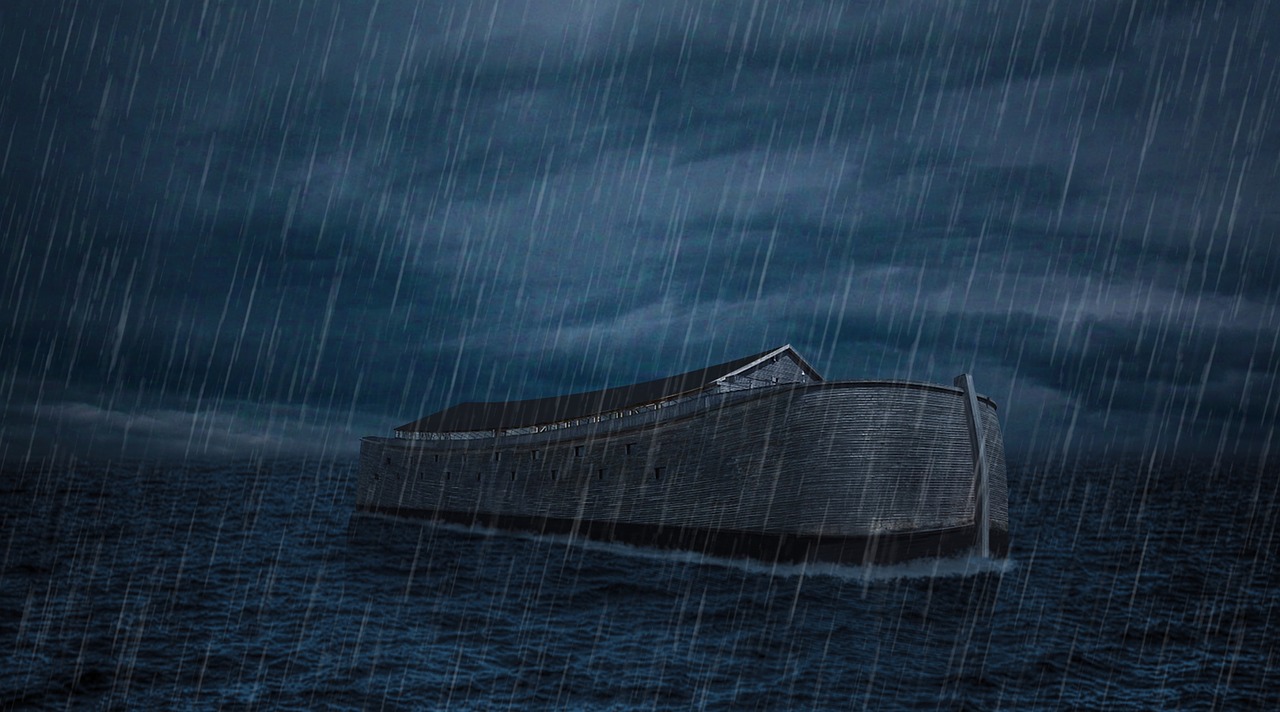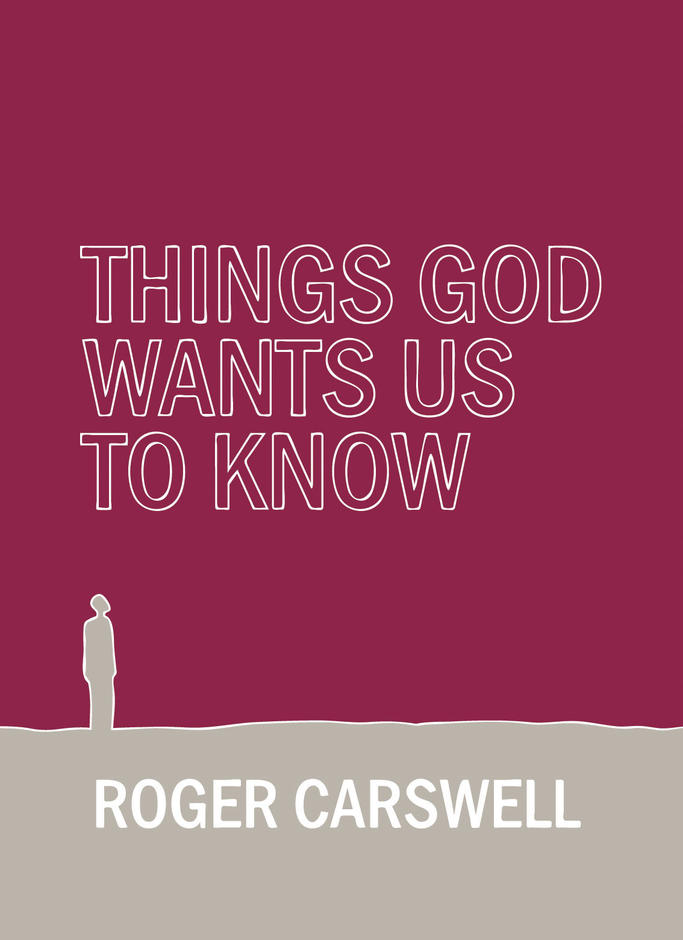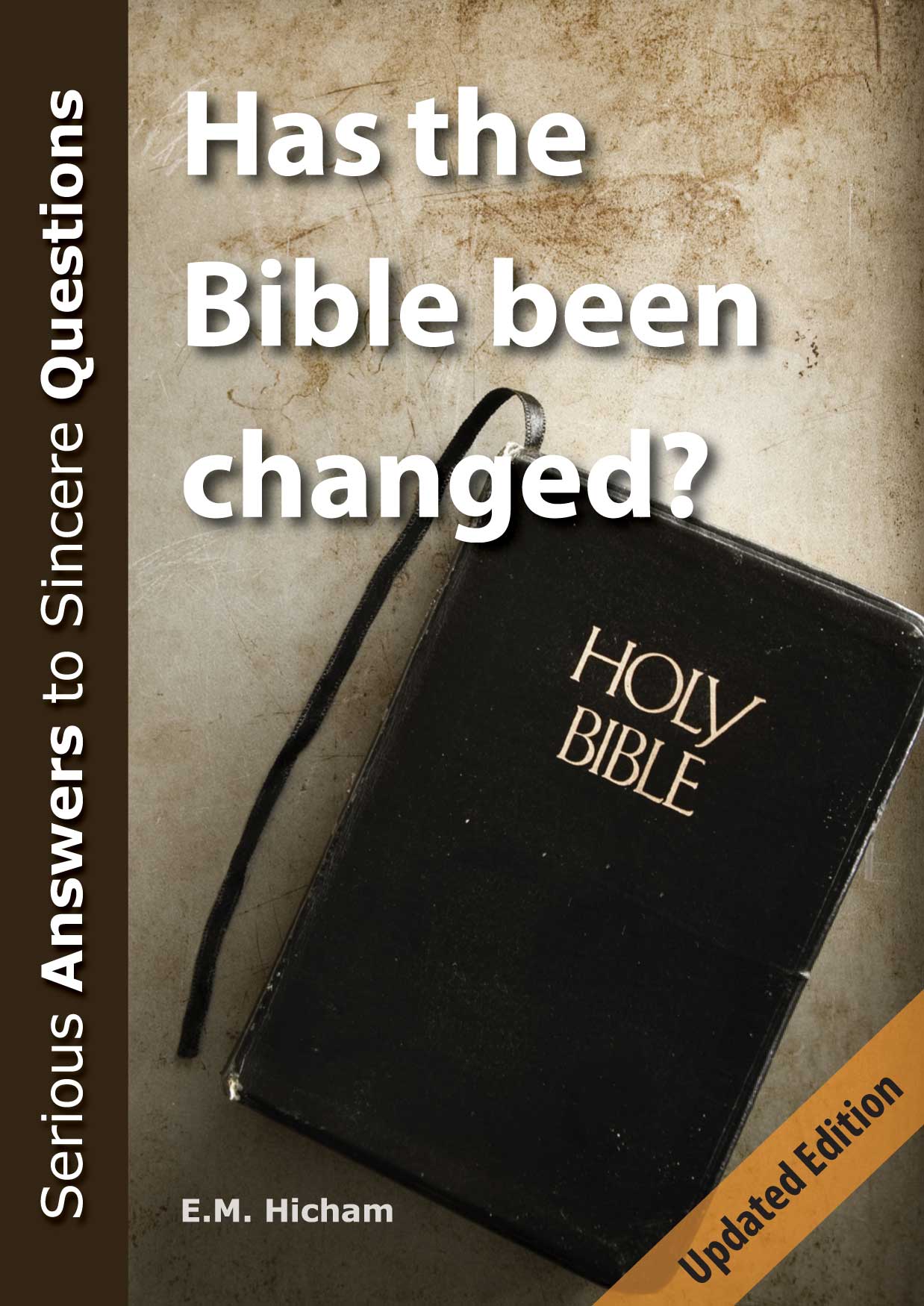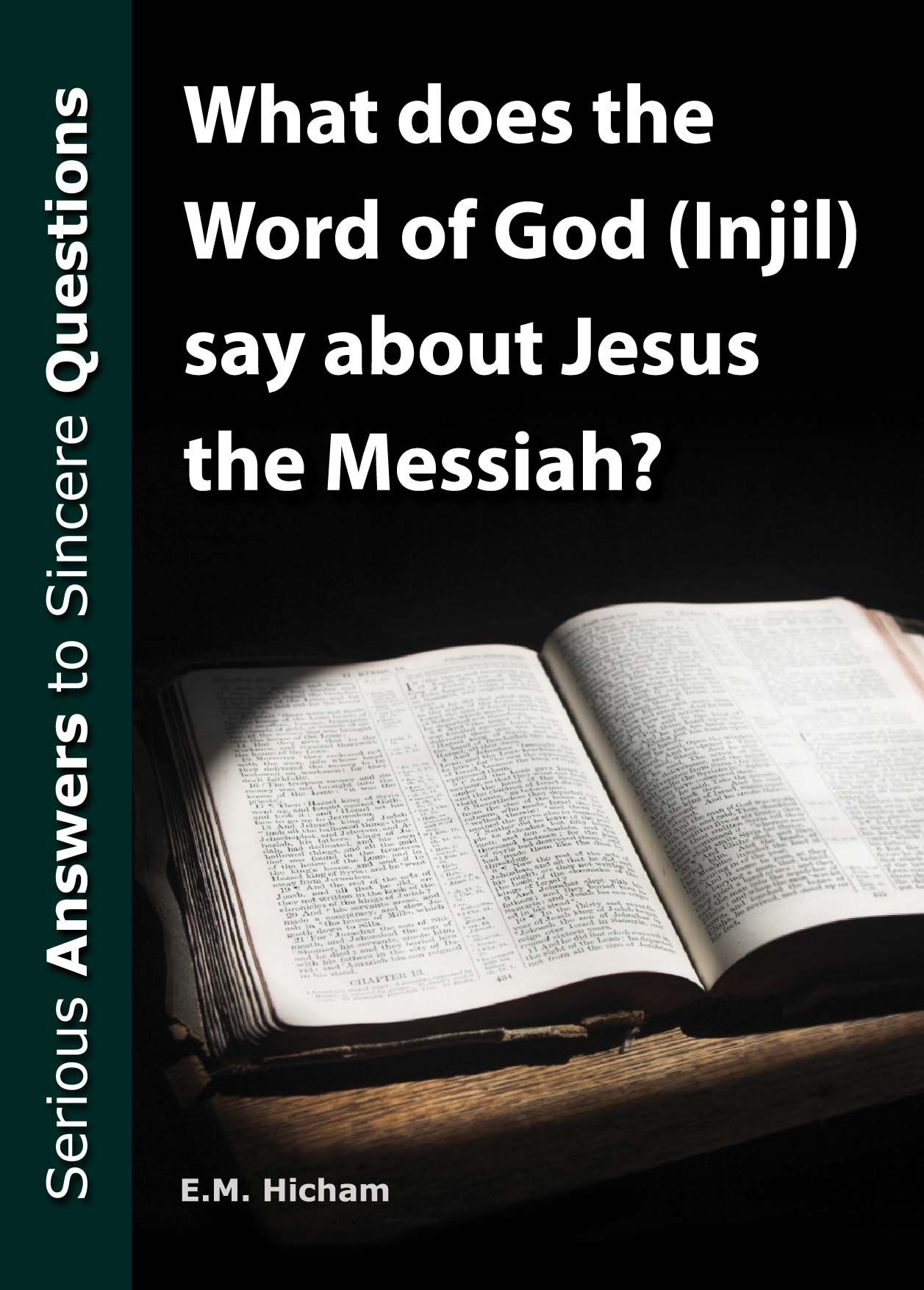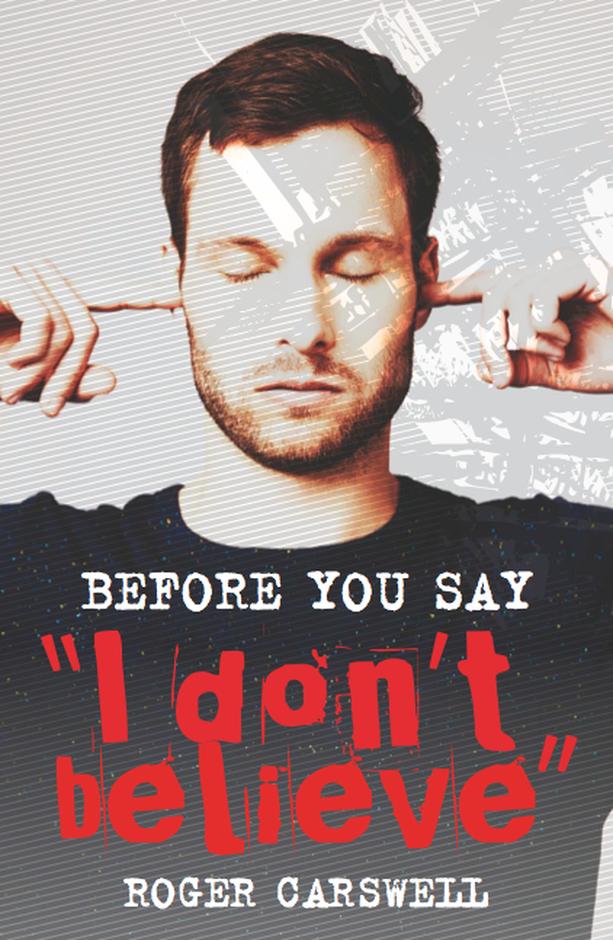Before you say, “I don’t believe.” Chapter 20
Have you seriously considered the weight of evidence for the resurrection of Jesus?
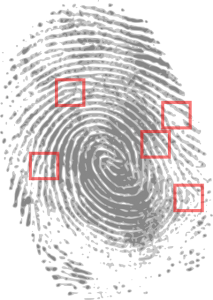 As Lord Chancellor in the 19th century, Lord Lyndhurst held the highest judicial office in the U.K. and was both a skilled lawyer and legislator. He said, “I know pretty well what evidence is; and I tell you such evidence as that for the resurrection (of Jesus Christ) has never broken down yet.”
As Lord Chancellor in the 19th century, Lord Lyndhurst held the highest judicial office in the U.K. and was both a skilled lawyer and legislator. He said, “I know pretty well what evidence is; and I tell you such evidence as that for the resurrection (of Jesus Christ) has never broken down yet.”
Also speaking of Jesus’ resurrection, Privy Councillor Charles Darling, who deputised for the Lord Chief Justice during World War I, said, “…there exists such overwhelming evidence, positive and negative, factual and circumstantial, that no intelligent jury in the world could fail to bring in a verdict that the resurrection story is true.”
General Lew Wallace (1827-1905) was an atheist who, encouraged by fellow atheist and sceptic, Robert Ingersoll, set out to write a book that would prove Christianity to be a myth. He perused and studied the leading books in Europe and America. During the course of researching his book, Wallace became convinced of the historical truth of the life, death and resurrection of Jesus, and literally fell to his knees and cried out, “My Lord and my God!” Wallace changed the purpose of his book and went on to write, ‘Ben Hur. A tale of the Christ’, which is considered one of the greatest English novels.
Professor Simon Greenleaf, law professor at Harvard University, was an expert on the law of evidence. He, too, was sceptical of Christianity and set out to disprove it. However, he came to the conclusion that according to the laws of legal evidence used in courts of law, the resurrection is one of the best attested facts of ancient history.
Pinchas Lapide, a German Jewish Rabbi, examined the evidence for the resurrection of Jesus, and in he book, ‘The Resurrection of Jesus: A Jewish Perspective’ (Published by SPCK, in 1984) concluded, ‘I accept the resurrection of Easter Sunday not as an invention of the community of disciples, but as a historical event.’
The resurrection of Jesus is a vital part of the Christian message. It proves that Jesus is more than mere man; rather, He has power over death and the grave. As well, it demonstrates that He really did fully pay the price of people’s sin, and that by raising Jesus from the dead, God was saying to this world that He had accepted the payment which Jesus had made for our sins.
It proves, too, that there is life after death. People sometimes say that no one has come back from the dead to tell us. But actually, someone has – Jesus rose again from the dead. That means that there will be a judgement for every human being. The first century Christian, Paul, said to a group of philosophers in Athens, that God “has appointed a day on which He will judge the world in righteousness by the Man whom He has ordained. He has given assurance of this to all by raising Him from the dead.”
If Jesus rose again from the dead, He is unique in all the world religions: Mohammed, Buddha, Confucius, the popes have all died and been buried. Only Jesus rose, leaving an empty tomb.
So what is the evidence?
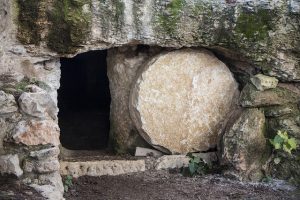 Friends and foes of Christianity are agreed that Jesus lived, He died and that the tomb in which He was buried was empty. We know these three facts from both the Bible and non-biblical records.
Friends and foes of Christianity are agreed that Jesus lived, He died and that the tomb in which He was buried was empty. We know these three facts from both the Bible and non-biblical records.
The Old Testament (the part of the Bible written long before Jesus) prophesied that the Messiah, the Holy One, would be born in Bethlehem, would live His life, would suffer and die, but that He would ‘not see corruption’. The New Testament documents describe the life Jesus lived and the death He died. The four Gospels, Matthew, Mark, Luke and John, record that Jesus’ tomb was empty. Dr. Luke, who recorded the visit of the women to the tomb of Jesus on the first Easter Sunday morning states, ‘then they went in and did not find the body of the Lord Jesus.’
In contrast to other ancient manuscripts there are thousands of copies (over 24,000) which date back to very shortly after they were originally written (the earliest written around 130 AD). Professor F.F. Bruce, previous Rylands Professor of Biblical Criticism and Exegesis at the University of Manchester, stated that ‘there is no body of ancient literature in the world which enjoys such a wealth of good textual attestation as the New Testament.’
The New Testament is not the only source of evidence. Roman historians, Pliny the Younger(Epistulae Book 10, Letter 96) , Cornelius Tacitus (Annals XV:44) and Suetonius (Life of Claudius XXV:4) each write of Jesus and His death. The Jewish historian, Josephus, who was born at the time of Jesus death, wrote,
‘Now there was about this time Jesus, a wise man, if it be lawful to call Him a man; for He was a doer of wonderful work, a teacher of such men as receive the truth with pleasure. He drew over to Him both many of the Jews and many of the Gentiles. He was [the] Christ. And when Pilate, at the suggestion of the principle men amongst us, had condemned Him to the cross, those that loved Him at the first did not forsake Him; for He appeared to them alive again the third day; as the divine prophets had foretold these and ten thousand other wonderful things concerning Him. And the tribe of Christians, so named from Him, are not extinct at this day.’ (Antiquities XVIII 3:3)
The issue is not whether the tomb of Jesus was empty, but why it was empty. So, look at the five possibilities for which people have argued:
1. There was a mistake – perhaps the women and others went to the wrong tomb.
 However, the Bible records that the women clearly noted where the body of Jesus was buried. In fact, the original word used in the Bible to describe what Mary Magdalene and Mary the mother of Jesus did, translated, means that they took a ‘good, long look at’ the place. They remembered where their loved one was buried. Moreover, they saw the discarded grave clothes of Jesus.
However, the Bible records that the women clearly noted where the body of Jesus was buried. In fact, the original word used in the Bible to describe what Mary Magdalene and Mary the mother of Jesus did, translated, means that they took a ‘good, long look at’ the place. They remembered where their loved one was buried. Moreover, they saw the discarded grave clothes of Jesus.
The tomb was also visited by Jesus’ disciples, Peter and John. Did they also go to the wrong tomb?
Remember that followers of Jesus were really upsetting the status quo of both Jewish life and the Roman authorities by saying that Jesus had risen from the dead. Had the body of Jesus been in the tomb they would easily have been able to disprove the Christian claims that Jesus had risen from the dead by simply producing the body. But they couldn’t. He was not there!
2. It was a delusion – perhaps the disciples saw a ghost, an hallucination or an apparition.
 Significantly, different types of people saw the risen Jesus. Matthew was a hard-headed tax collector; Peter was a tough fisherman; Paul was an intellectual academic; Thomas the sceptic has gone down in history as a doubter; Mary had just recently witnessed a triple crucifixion. They saw Him in different circumstances over a period of 40 days: in a garden, on a mountain, in a room, on a road and by the seashore. On one occasion, He was seen by a crowd of over 500 people.
Significantly, different types of people saw the risen Jesus. Matthew was a hard-headed tax collector; Peter was a tough fisherman; Paul was an intellectual academic; Thomas the sceptic has gone down in history as a doubter; Mary had just recently witnessed a triple crucifixion. They saw Him in different circumstances over a period of 40 days: in a garden, on a mountain, in a room, on a road and by the seashore. On one occasion, He was seen by a crowd of over 500 people.
What was it that convinced ordinary, down-to-earth people that Jesus was risen? When some suspected that maybe Jesus was a spirit, He replied, “Behold my hands and my feet, that it is I myself. Handle me and see, for a spirit does not have flesh and bones as you see I have.”
If these were merely hallucinations, why did they abruptly stop after 40 days? And why did the authorities not produce the body of Jesus? That would have silenced the Christians who were boldly proclaiming the risen, living Jesus.
3. This was a fraud – the disciples stole the body.
This is the oldest theory to explain away the resurrection, for the first suggestion of fraud is recorded in Matthew’s Gospel. There we read that the chief priests and Pharisees made a request to Pilate saying, ‘we remember that while He was still alive that deceiver said, “After three days I will rise again.” So give the order for the tomb to be made secure until the third day. Otherwise, His disciples may come and steal the body and tell the people that He has been raised from the dead. The last deception will be worse than the first.’ We then read that ‘some of the guards went into the city and reported to the chief priests everything that had happened. When the chief priests had met with the elders and devised a plan, they gave the soldiers a large sum of money, telling them, “You are to say, ‘His disciples came during the night and stole him away while we were asleep.’ If this report gets to the governor, we will satisfy him and keep you out of trouble.” So the soldiers took the money and did as they were instructed.’
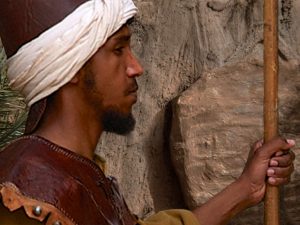 It really was a desperate explanation, because it was known that there were numerous security precautions set up. The tomb was guarded by soldiers. If they were Roman soldiers, they came as a highly disciplined four to sixteen man security unit. If I had been a barrister in a court of law hearing that the soldiers said the body was stolen while they were sleeping, I would have asked the obvious question as to how they knew that if they were asleep!
It really was a desperate explanation, because it was known that there were numerous security precautions set up. The tomb was guarded by soldiers. If they were Roman soldiers, they came as a highly disciplined four to sixteen man security unit. If I had been a barrister in a court of law hearing that the soldiers said the body was stolen while they were sleeping, I would have asked the obvious question as to how they knew that if they were asleep!
As well, there was a heavy stone rolled in front of the tomb, and sealed. Jews treated bodies with great respect, so the dead body of Jesus was laden with aromatic spices before being carefully wrapped with linen cloths, separately around His body and His head. (There was not a complete sheet, so the idea of the Turin Shroud is shown to be untrue from a snippet of information which John’s Gospel gives us in 20:6 & 7)
Are we to believe that the hugely disappointed disciples somehow sneaked past the guards, moved the stone, carefully unwrapped the cloths around Jesus’ body, neatly leaving them looking as if a body was still in place, and then removed the body of Jesus, carrying this naked corpse through the streets? And to where did they take it? What would they have done with the body? And what was their motive? Then, who was it who went around with nail wounds in his hands and feet, looking and sounding like Jesus, convincing even the most sceptical that He was Jesus, risen from the dead? And would such deceivers have preached such good morality, then been willing to die for what they knew to be a fraud and deception? It is one thing to die for a passionately held illusion, but a very different thing to die for something you know to be a lie.
Chuck Colson was Special Counsel to President Nixon at the time of the Watergate scandal which rocked the United States. At the centre of the incident was a break-in to the Democratic Party headquarters. Twelve of the cleverest men believed they could cover up this and other associated crimes. Within three weeks, the truth had come out. Colson stated, “Watergate embroiled twelve of the most powerful men in the world – and they couldn’t keep a lie for three weeks. You’re telling me twelve apostles could keep a lie for 40 years. Absolutely impossible!”
Rather, we read that when disciples of Jesus, Peter and John, went to the tomb where Jesus had been laid, they observed that the body had gone though the grave clothes remained. Peering at the place where Jesus’ body had lain, they saw the cloths in the form of a body looking like an empty chrysalis of a caterpillar cocoon. John, the author of the Gospel, says of himself that he saw and believed.
4. Maybe Jesus merely swooned on the cross – He never actually died.
 Conceding that the tomb was empty and that the body of Jesus had gone and that He was appearing to people, it was first suggested by the German atheist Venturini that Jesus had simply fainted, to recover later when He was in the tomb.
Conceding that the tomb was empty and that the body of Jesus had gone and that He was appearing to people, it was first suggested by the German atheist Venturini that Jesus had simply fainted, to recover later when He was in the tomb.
Again, though the argument seems plausible initially, it totally ignores the facts that after being flogged in the most inhumane way with a Roman flagellum, a many-thonged whip (which Mel Gibson tried to portray in his film, ‘The Passion of the Christ’), nails were driven through Jesus’ hands and feet as He was crucified. Hours later a spear was thrust into His side by a Roman soldier. John, an eye witness, recalled the sight, ‘But one of the soldiers pierced His side with a spear, and immediately blood and water came out.’ (John 19:34) Medically, upon death where there is heart failure, the sac around the heart called the pericardium becomes distended with serum – a watery fluid. The perforation of the sac, and the resultant flow of blood and serum was thus evidence that death had occurred.
Jesus’ body was then taken down, tightly bound in yards of linen grave clothes, weighed down by pounds of spice and placed in a cold rock-hewn tomb in Jerusalem without food or water.
Are we then asked to believe that He regained sufficient strength not only to get on to His feet, but to undo the wrappings (and then fold them again leaving them as if there were still a body within them), break the seal which held (what was probably) the two tonne stone in place at the mouth of the sepulchre, roll away the stone, walk eight miles on wounded feet, and then appear to the disciples in such splendour that they were convinced He was the risen, triumphant Christ?
5. Or, this was a miracle – Jesus did what He said He would!
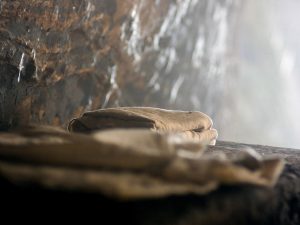 At dawn, on the first day of the week, Mary Magdalene and the other Mary went to look at the tomb. They discovered it was empty because Jesus had risen. They heard the words reverberate, “He is not here, He is risen.”
At dawn, on the first day of the week, Mary Magdalene and the other Mary went to look at the tomb. They discovered it was empty because Jesus had risen. They heard the words reverberate, “He is not here, He is risen.”
Over the next 40 days Jesus appeared many times and in different circumstances, so that over 520 people had seen the risen Christ. Most of these were alive at the time of writing the accounts of His resurrection and could testify to the truth of what they had seen and heard. He appeared five times on the day of His resurrection, first to Mary Magdalene and then to Mary the mother of James, Joanna and others as they hurried back to Jerusalem. Peter then met Jesus and was convinced, even after his three-fold denial of even knowing Jesus before the crucifixion. Cleopas and his companion met Jesus on the road to Emmaus in the late afternoon. Finally, Jesus appeared to the disciples in the Upper Room and had supper with them.
Illusionist, Todd Alexander, in one of his performances demonstrates how Jesus’ resurrection cannot have been illusion. Interestingly, the three highest senses were involved in verifying the facts of the resurrection. Eye witnesses saw and heard Jesus, and some were invited to touch him. This was no conjuring trick. Remember too, that some who believed were initially sceptic or disbelieving – think of Thomas who said he would not believe unless he could put his fingers in the wounds of Jesus’ hands, feet and side. As soon as Jesus appeared, Thomas fell on his knees saying, “My Lord and God!” Saul of Tarsus was persecuting Christians until he was confronted by the risen Jesus, which turned him completely around.
Link this eyewitness evidence with the circumstantial evidence and the case seems watertight:
• The tomb where Jesus was laid was empty
• The Roman seal on the stone was broken
• The extremely large stone, which two people said they could not move, had rolled away, even though soldiers stood guard
• A highly disciplined Roman military guard (some of whom fled when Jesus rose) had to be bribed to lie about what happened
• The undisturbed grave clothes no longer contained the body
• Christians began to worship not on their Saturday Sabbath but on the first day of the week to commemorate Jesus’ resurrection
• Early Christians willingly died testifying to the truth of Jesus’ death and resurrection
It is no wonder that Thomas Arnold, Professor of Modern History at Oxford University said, “I know of no one fact in the history of mankind which is proved by better and fuller evidence of every sort, to the understanding of a fair inquirer, than the great sign which God has given us that Christ died and rose again from the dead.”
Frank Morison, a journalist, thought the resurrection was nothing more than a fairy-tale happy ending. He set out to disprove it. Upon studying the facts, he came to a different conclusion. He wrote the best selling book, ‘Who moved the stone?’ the first chapter of which was called ‘The book that refused to be written.’
 I remember asking my agnostic Professor of Sociology if he had ever read the book. He had, and called it ‘the most convincing piece of Christian literature I have ever read.’ When I pressed him, he admitted he could not answer or explain it, but still would not believe in Jesus!
I remember asking my agnostic Professor of Sociology if he had ever read the book. He had, and called it ‘the most convincing piece of Christian literature I have ever read.’ When I pressed him, he admitted he could not answer or explain it, but still would not believe in Jesus!
At the end of a law case, often a jury is called upon by the trial judge to deliver a verdict. The evidence for the resurrection demands a verdict from us. It seems intellectually dishonest to walk out on Jesus when the evidence for His life, death and resurrection is so overwhelming. Jesus said to Thomas who believed only after seeing the risen Christ, “Blessed are those who have not seen and yet have believed.” (John 20:29)
Grill a Christian by Roger Carswell - request your free copy!
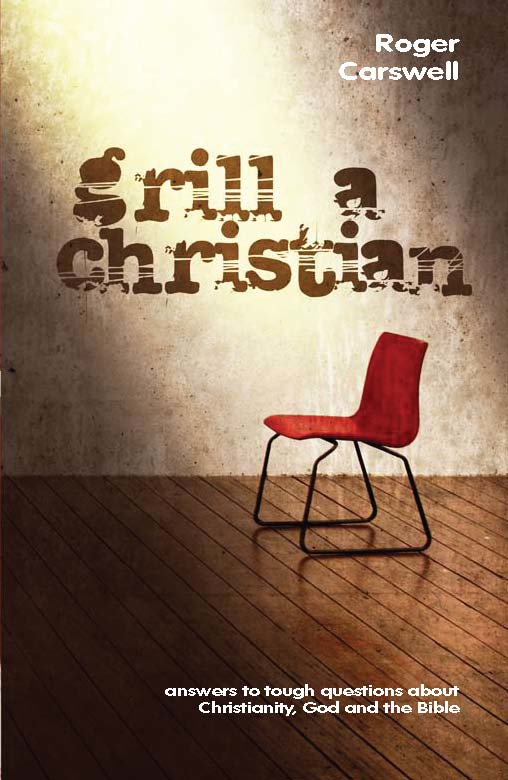
Wouldn't you just love to grab a Christian, sit them down in the hot seat and grill them mercilessly on the tough questions about God, the Bible and the world? If you have ever wished you could have your question about God answered, then this book is for you!
request now

